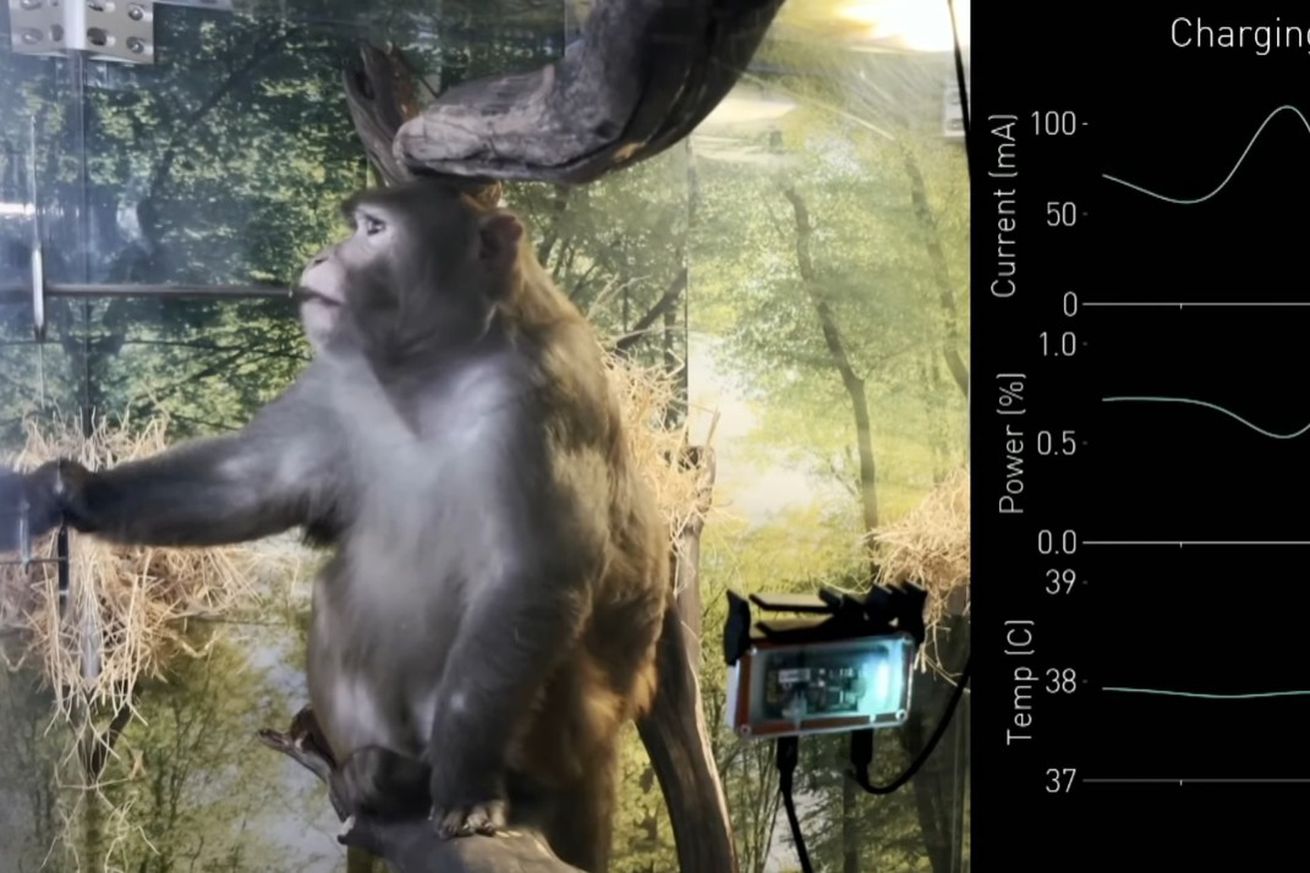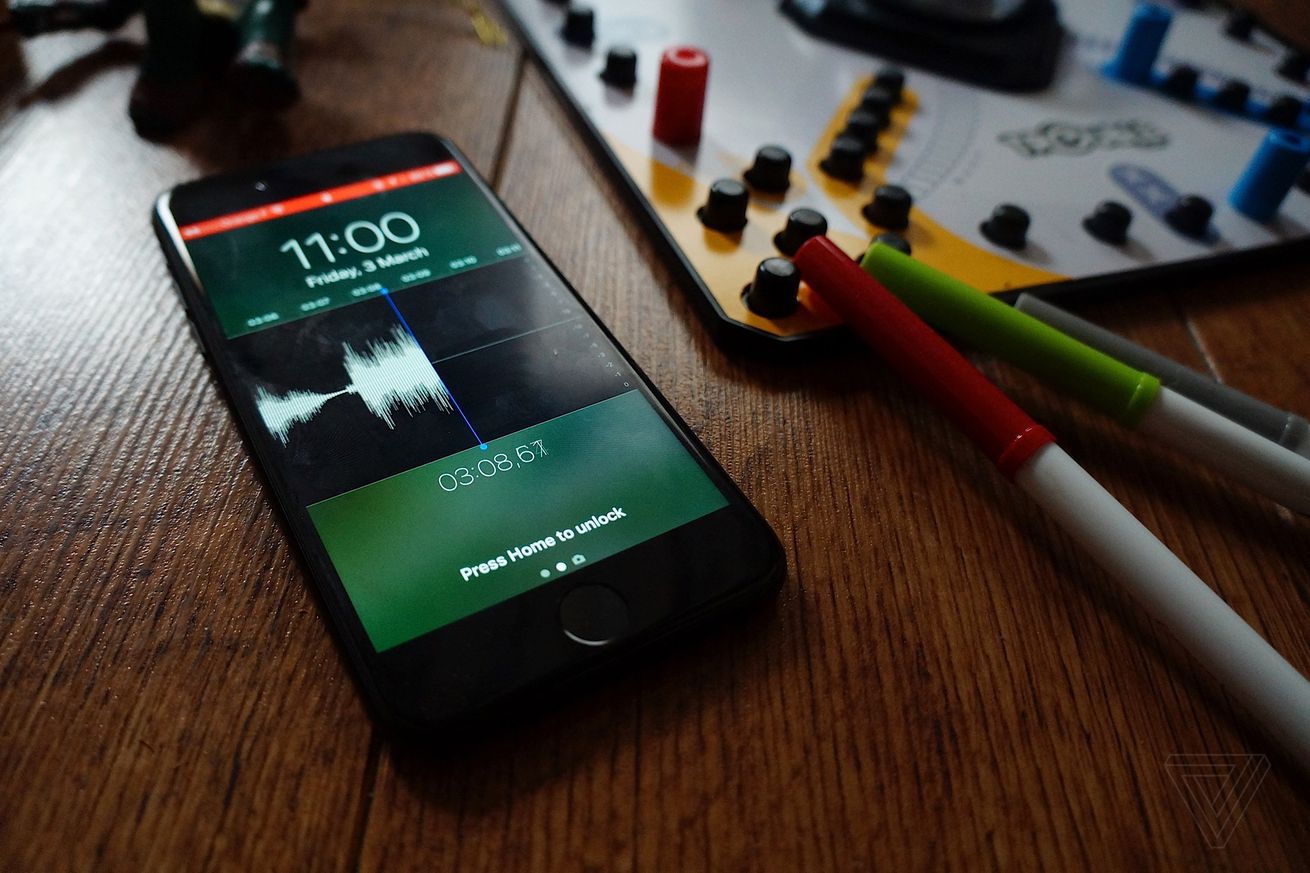Two humans and a beagle named Hank spent two weeks and 2,000 miles in Europe with a Ququq camping box to preview the future of #vanlife.
Like most people, I’m intrigued by the idea of electric cars but not yet convinced it’s time to make the leap. I can name every Tesla model, a few pickups from Ford and Rivian, and that’s about it. But when Volkswagen announced the production model of the all-electric ID Buzz, which began hitting European roads late last year… well, suddenly, I was very interested.
See, I’m the guy who spent a week living in a VW Transporter T5 “Ventje” last year and once rented a vintage Type 2 VW Microbus named “Fergus” for a summer just to wild camp around Scotland with my family. Generally, I abhor blatant attempts to convert nostalgia into product or ticket sales, but VW had me hooked ever since the ID Buzz was introduced as a far-out concept. That is until I learned the unthinkable: the ID Buzz would launch in passenger and cargo variants only — no “California” campervan. For that, I’d have to wait until 2025 or longer. Ugh!
Then a few months ago, I discovered the aftermarket Ququq BusBox-4 camping box. It converts either the ID Buzz passenger or cargo vans into a two-person camper — and back — in just minutes. It’s available right now, and at €2,790 (about $3,000) costs a fraction of the premium the VW ID California will likely demand.
So, I decided to put the ID Buzz and Ququq to the test to answer two main questions: can today’s ID Buzz already function as an electric campervan, and can it support remote work for an extended period of time?
With that in mind, I packed up my wife and dog and began a nearly 2,000-mile round trip trek across Europe from Amsterdam in the north to Milan in the south, on a loosely planned road trip that still required us to clock in at work each morning. We slept, worked, and ate (minus a few lunches) exclusively from the ID Buzz for a period of two weeks.
The experience was an epiphany for me, a first-time EV driver and aspiring digital nomad, with many lessons learned along the way. The age of e-vanlife is dawning, and our experience with the ID Buzz is a preview of what’s to come.
To be clear, this isn’t a review of the VW ID Buzz electric van — there are lots of places you can get that from people with much more car experience than I have. This is a review of the ID Buzz as an adaptable do-it-all campervan — one vehicle that serves a variety of needs. For that reason, my single favorite feature is an optional (€331) DC-to-AC inverter that places a European standard 230V power socket beneath the front passenger seat (more on that later).
/cdn.vox-cdn.com/uploads/chorus_asset/file/24681236/IMG_4310.jpeg)
The ID Buzz is built upon the same MEB platform as VW’s first electric car, the ID.3, just like the original Type 2 Microbus derived from the Type 1 Beetle. So, in reality, the ID Buzz is more than just a cheap nostalgia ploy — it’s following the same evolutionary path as its incredibly iconic and successful predecessors. Knowing that makes me feel less like a hapless victim of the sentimentality machine — or so I tell myself.
My review vehicle is a fully loaded ID Buzz 1st Max Edition passenger van with every option possible. It’s priced at almost €80,000 (about $88,000), which includes roughly €14,000 of taxes here in the Netherlands. For comparison, it’s still much cheaper than a €113,990 base Tesla Model X SUV in the Dutch market at the time of publication.
I will say this in summary of the ID Buzz itself: everyone who drove it or saw it loved it. People were so charmed by it that they would engage me with questions when parked at charging stations or pull up alongside while driving to flash thumbs-up and hang-loose gestures. It was smiles all around, very similar to the joy we spread when driving that delightful old Type 2 around Scotland. Hell, if you look at the front end of the ID Buzz just right, even it seems to be smiling.
The ID Buzz’s low center of gravity, optional 21-inch wheels, and rear-wheel drive combine for a surprisingly fun drive. It also offers excellent visibility for a large car that actually feels small, thanks to a windshield that drops down to clearly mark the front of the car and a bevy of sensors and cameras that alert you to nearby objects. It also has a surprisingly tight turning radius which was very useful when navigating narrow Italian streets.
But I agree with reviewers who say the infotainment system is underpowered and convoluted with a mix of interfaces that leave you wondering if a push, pull, or touch is the expected input (things you’ll eventually develop muscle memory for). The button for the hazard lights, for example, is touch sensitive for some reason resulting in three accidental triggers.
(Not so free) Range
I’m not a car guy, but I do love a big rolling battery that can power all my gadgets. So when I look at the ID Buzz, I see a giant power plant. But as large as the VW ID Buzz is, the battery maxes out at just 82kWh, of which only 77kWh is usable. That’s not a lot for its size, especially when you consider that it’s the same battery capacity found inside the smaller VW ID.4 and ID.5.
The battery capacity was a concern for me — a first-time EV driver — given the conditions I planned to drive in. See, EVs perform optimally in warmer temps around 21C (70F) and at city speeds where regenerative braking can do its thing. My planned route was likely to be cold and fast along great swaths of alpine highway to cover as much of the European charging network as possible. I also planned to regularly tap into the VW’s high-voltage battery while working in order to keep the van heated and all my gear powered on. It wasn’t long until I understood what range anxiety felt like, and I hadn’t even left the house!
Temperatures on my route ranged from -3C to about 17C (27F to 63F) during my two weeks of testing, but mostly they hovered between 3C and 12C (37F to 53F) on average. That meant that the car needed to be continuously heated, which lowered my overall range since the ID Buzz lacks a heat pump found on more efficient EVs. And yes, I can confirm that the ID Buzz has a top speed of 150km/h (93mph), which I verified a few times on the German autobahn.
Based upon my usage — which included siphoning about 5kWh per day to support living and working from the ID Buzz — I was burning through an average of 23.9kWh every 100km (60 miles), or nearly a third of my battery capacity, as reported by the ID Buzz’s infotainment system. That equates to 239Wh consumed per kilometer traveled or 2.6 miles per kWh, putting it much closer to a Ford F-150 Lightning in terms of efficiency than a Tesla Model 3. My driving yielded a range of around 322km (200 miles) per charge — well short of the heavily asterisked 423km (263 miles) WLTP range that VW quotes in its European marketing but in line with the 330km real-range data reported by EV Database.
But here’s the thing: despite these rather underwhelming figures and being a total EV novice, after just one or two days of travel, I never again felt anxious about my range. Mostly because we’re spoiled with choice of fast chargers here in Europe, something I quickly discovered as I meandered my way through the Netherlands, Germany, Belgium, Luxembourg, France, Switzerland, and Italy.
/cdn.vox-cdn.com/uploads/chorus_asset/file/24681265/IMG20230410194501.jpg)
I found Europe’s network of ultra-fast DC chargers (300kW and greater) offered by companies like FastNed, Shell, Ionity, GoFast, and yes — Tesla — to be surprisingly robust. They were plentiful, located conveniently next to food, shops, and space to run our high-energy dog. And not once did I have to wait for a stall at any DC charging stations we pulled into, even when traveling during the long Easter weekend. In fact, I usually arrived to find the majority of stalls unoccupied and available for immediate ultra-fast charging. And unlike what many have experienced in the US, I can only recall seeing a single broken charger on my entire 3,000km journey.
The ID Buzz supports a stated maximum of 170kW DC fast charging from its CCS port, with a relatively flat charging curve that allows it to go from 5 to 80 percent in about 30 minutes. My stops often lasted longer though, about 45 minutes to an hour, because we wanted to charge to 100 percent and because the stops were a welcome and enjoyable break after two to three hours of driving, especially when you can just open the tailgate and cook up a quick meal.
Cookoo for Ququq
VW says a camper version of the ID Buzz is coming — someday — but it hasn’t committed to a firm timeline yet. That’s where Ququq (pronounced kookook) comes in. It’s a small German company that’s been making all-in-one camping boxes for a variety of vehicles for more than a decade. As an official VW accessory supplier, its party trick is the ability to convert the ID Buzz — cargo or passenger van — into a functional camper complete with a kitchen and bed in less than 10 minutes.
/cdn.vox-cdn.com/uploads/chorus_asset/file/24681262/IMG20230414185012.jpg)
I tested the Ququq BusBox-4 camping box designed specifically to turn the ID Buzz into a tiny mobile home. It really is a marvel of ingenuity — value, too, if you force your brain to squint a little.
See, when VW does finally deliver a true ID California campervan based on the Buzz, it could easily add tens of thousands to the already steep price, same as VW’s current California camper series can more than double the price of a base Transporter today. The Ququq BusBox-4, however, costs just a fraction of that at €2,790 (about $3,000) while making it easy to convert that five-seater into a weekend campervan for mom and dad and their dog while the kids sleep outside in a tent.
The Ququq weighs 62kg (137 pounds) and requires two people to lift the camping box into the back of the ID Buzz. It fits just behind the passenger bench, where it’s secured to the van’s lashing points with included ratchet straps. It’s a little inelegant, but it gets the job done, and it’s easy enough for a couple of sturdy humans to swap in and out of the van whenever the desire strikes.
The 10cm-thick mattress sleeps two comfortably, measuring 125 x 195cm when unfolded over the collapsed passenger bench. That makes for a rather snug arrangement that my wife and I nevertheless found to be sufficiently roomy. Unfolding the three-part bed requires the perfect combination of strength and finesse, which we could each do solo (and safely — watch your fingers!) after a few days of practice.
/cdn.vox-cdn.com/uploads/chorus_asset/file/24681255/IMG20230407185034.jpg)
Inside the BusBox-4, you’ll find a compact but efficient kitchen. Open it up, and the door folds down to create a convenient table. On the left, you can slide out a two-burner gas stove with space beneath for things like spices, coffee and tea supplies, cutlery, and cooking utensils. Fold up the windscreen and lock the small butane cartridges into place, and you’re ready to start cooking with fire.
In the middle of the opened Ququq is a slide-out drawer holding a small 12V fridge that can be controlled with a Bluetooth app (it’s not needed). It’s powered by a cable that snakes through the vents of the Ququq box and back to the 12V socket near the Buzz’s lift gate. The fridge can also be a freezer, but it’s either or — not both at the same time. It’s nothing special, and not very big at 15 liters, but still proved suitable to our needs. If you need more space, then a 20-liter fridge is also available.
Lastly, on the right of the open BusBox-4, you have a pair of 10-liter (2.6-gallon) freshwater tanks with a simple screw-on valve attachment. This section also includes two useful stainless steel trays for help with washing up and two reasonably comfortable chairs that tuck away neatly into a recess when not in use.
There’s nothing fancy here, and it does look slightly incongruous to the clean, modern lines of ID Buzz. Still, it’s a smart design that’s executed with durable and easy-to-clean materials like treated plywood and aluminum. VW’s so high on the Ququq x ID Buzz pairing that the two have been featured in official press materials.
Power to the people
I had hoped that VW would give the ID Buzz a Tesla-like Camp Mode, whereby you can stay inside the van for hours while still enjoying powered jacks, lights, music, and heating. Sadly, that was not the case, and there’s no indication if VW will ever offer this, at least not until the ID California campervan arrives.
/cdn.vox-cdn.com/uploads/chorus_asset/file/24681266/IMG_7517.jpeg)
And while the fully maxed out ID Buzz I was driving was fitted with a single 230V jack under the front passenger seat, it’s only active for about 30 minutes when the ignition is on and then for another 15 or 20 minutes after the ignition automatically shuts off due to inactivity. That presents a real problem when trying to charge a laptop or keep Starlink internet operating without interruption.
Nevertheless, living and working from an ID Buzz fitted with a Ququq is not only possible, but it also requires fewer compromises than you might think, just as long as you’re packing the right gear.
On the power side, I brought along a small BaseCharge 1500 battery and solar panel from Biolite, a company best known for making fire pits in the past. I had planned to bring a larger and more capable AC200Max solar generator from Bluetti, but when I plugged it into the Buzz’s 230V socket, it tripped the VW’s breaker. Unfortunately, the AC200Max draws a steady 500W, and the Buzz’s inverter can only produce 300W with a 450W surge. The BaseCharge 1500 pulled just 112W, and its smaller physical size turned out to be just right for our needs.
Without a camp mode, I also hoped that the ID Buzz’s bidirectional charging — a vehicle-to-home charging feature that appeared on my infotainment system but requires a future firmware update to activate — would be ready for my journey. That would give me another way to keep the solar generator charged or power my Starlink’s router and dish via an adapter. Alas, the update never arrived, and the firmware release is still TBD.
/cdn.vox-cdn.com/uploads/chorus_asset/file/24681269/IMG20230406122517.jpg)
/cdn.vox-cdn.com/uploads/chorus_asset/file/24681284/IMG20230406194230.jpg)
/cdn.vox-cdn.com/uploads/chorus_asset/file/24681276/IMG20230411093826.jpg)
/cdn.vox-cdn.com/uploads/chorus_asset/file/24681277/IMG20230411091821.jpg)
The Ququq opens to form a convenient desktop.
So my strategy was to charge the Biolite BaseCharge 1500 off the ID Buzz’s 230V jack whenever I could and tap into the Biolite’s 1,521Wh capacity battery and its numerous AC (1200W with 2400W surge) and DC outputs (USB-C, USB-A, wireless charging pad, and 12V) to provide on-demand power to all the gear we carried for work and play. I always charged it when driving and soon got into the habit of repeatedly hitting the ignition button throughout the workday to keep the juice flowing. When away from the van, I’d supplement charging with a 100W Biolite solar panel that I’d place on the roof with the cable snaked back through a cracked window to the BaseCharge battery.
I even bought a €120 Type 2 adapter cable that let me charge the BaseCharge battery from public EV chargers. I never had to use it, though, except once as an early proof-of-concept test.
The strategy worked well. I was able to keep the Biolite battery charged at over 80 percent most of the time while also keeping all my office gear running. I only allowed the BaseCharge 1500 to drop as low as 30 percent once, but that’s only because I had a 12-hour drive coming up which was plenty of time for the VW’s 230V port to easily return the Biolite’s charge to 100 percent.
The Biolite BaseCharge 1500 did have some quirks, though. The fan would come on every 10 minutes or so and then run for 30 seconds at too high a pitch despite the AC load only pulling around 50W — that’s a pretty low threshold for an inverter fan. Once, I had a USB overload error that required me to reset the device, and multiple times the display showed low input power readings that could be corrected by reinserting the AC or solar power charging cables.
Hit the road, jacks
The ID Buzz’s USB-C ports (no USB-A anywhere) offered a mixed bag of capabilities that I never did fully figure out. The two USB-C ports located on the dashboard offered charging and data (for CarPlay and Android Auto) but failed to keep my Apple and Android phones charged despite claiming to support up to 15W of charge. That’s bad because I needed at least one phone to supplement VW’s stuttery satnav.
Fortunately, the USB-C ports in the front passenger door and each sliding door provide up to 45W of USB-C PD power. That meant snaking a 10-foot-long USB-C cable from my phone mounted to the left of the steering wheel all the way to the front passenger door on the right.
The USB-C ports, like the 230V AC jack, only had power when the ignition was on and for a few minutes after it was turned off. The 12V / 120W cigarette lighter jack in the back powering the Ququq’s fridge had continuous power, however, as it pulled straight off the Buzz’s small 12V starter battery. VW says its intelligent onboard supply management system automatically takes various actions to prevent the 12-volt vehicle battery from discharging when subjected to a heavy load.
Staying connected while disconnecting
On the data side, I reactivated my Starlink RV subscription that I put on hold at the end of last summer. My wife and I also brought three phones with big data plans from three different providers. These would act as backup to my Starlink internet or for whenever we didn’t feel like taking the 10 minutes required to reconfigure the van for Elon Musk’s space internet.
/cdn.vox-cdn.com/uploads/chorus_asset/file/24681279/IMG20230408075117.jpg)
Starlink was bulletproof the entire journey, with downloads averaging over 150Mbps and uploads averaging 20Mbps no matter where my wife and I decided to set up an office, though I was careful to avoid tree coverage. Nevertheless, it seemed to handle overhead branches and other obstructions even better than last summer’s Starlink RV review. From the perspective of our work colleagues, we appeared to function no differently than when we were working from home, at least until the Matterhorn — the real one in Switzerland — showed up in a Zoom call.
Otherwise, 5G data was often available and provided faster uploads in situations where I needed to upload video, for example. I only tried to use the Buzz’s 4G hotspot a few times: once, it failed to connect with my iPhone and another, it was just too slow to bother using from my MacBook. Still, I guess it was good to have a fifth connectivity option. I ignored public Wi-Fi at places like campsites as it was generally much slower than anything I had in tow.
Drive, sleep, work, repeat
As a rule of thumb, the smaller a vehicle, the more often it needs to be reconfigured throughout the day. And compared to vanlifer platforms like the Ford Transit and Mercedes Benz Sprinter, the VW ID Buzz is definitely on the small side.
On any given day, my wife and I would reconfigure the van through a progression of three modes: driving, sleeping, and working. Fortunately, the Ququq’s kitchen was always available whenever parked.
/cdn.vox-cdn.com/uploads/chorus_asset/file/24681281/IMG20230409091941.jpg)
/cdn.vox-cdn.com/uploads/chorus_asset/file/24681282/IMG20230409100742.jpg)
/cdn.vox-cdn.com/uploads/chorus_asset/file/24681273/IMG20230406105051.jpg)
/cdn.vox-cdn.com/uploads/chorus_asset/file/24681283/IMG20230407204907.jpg)
The passenger bench goes flat for the Ququq’s bed to be unfolded.
In driving mode, the Ququq and bedding materials were folded up and secured, the rear passenger seats flattened for Hank to roam around and for the Biolite battery plugged into the 230V socket and placed behind the front passenger seat where its ports could still be accessed.
Sleeping mode meant moving the Biolite battery (and some other bulky items) to the driver’s seat where it could power the Starlink (cable running through a slightly cracked window) and recharge our phones and laptops overnight. I usually unplugged the Starlink’s AC cable before falling asleep to prevent the Biolite’s irritating inverter fan from turning on. After flattening the bench seat, we could unfold and make the bed. Hank slept in a large portable crate, resting mainly on the front passenger seat. And since I couldn’t rely upon the Buzz’s lighting, we used a rechargeable Biolite lantern to keep the interior illuminated with light that varied from a warm candle glow to tripping balls.
Work mode meant removing Hank’s crate and folding the bed back up to lift the right-side rear passenger seat to create a second interior workstation. The ID Buzz is fitted with two rather flimsy folding tables on the backs of the front seats that still proved useful throughout the workday. When the weather was good, we could work outside in the folding Ququq chairs using the kitchen’s door as a makeshift desktop. The ID Buzz was far more comfortable and flexible than it might appear, usually with much better views than any office cubicle.
It was all a little messy at first, but soon all our gear found a home with help from the ID Buzz’s numerous door and seat pockets. After about three days, we had each reconfiguration mode down to a reasonably fast routine.
/cdn.vox-cdn.com/uploads/chorus_asset/file/24681242/IMG_1386.jpeg)
The biggest annoyance was covering the windows at night while parked at crowded campsites. Since VW isn’t yet offering a camper version of the ID Buzz, I had to invent my own privacy solution: a yoga mat for the front window and aluminum foil everywhere else — items we were carrying anyway.
At night I’d unfurl the yoga mat inside the front windshield where it could be gingerly held in place by the visors. I then squirted a little all-purpose cleaner on the inside of the other windows, which allowed the foil to “stick.” It worked surprisingly well at first, installing in about five to 10 minutes. But in our attempt to keep waste to a minimum, we reused the foil each day, causing it to become less sticky the more it was crumpled and torn. Soon we were tasked with trying to piece together a giant vertical jigsaw puzzle each night. If I did it all again, I’d find a third-party solution with magnets or suction cups before heading out.
Conditioning the air
Without the kind of Camp Mode found on Teslas, heat — which VW lumps under the confusing catchall of “air conditioning” — was always going to be an issue when trying to work and sleep in temperatures that often hovered around freezing. And just like with the 230V outlet and USB-C ports, I had to keep hitting the ignition button throughout the workday to keep the heat flowing from the ID Buzz’s vents. In this way, I could heat the van for about 45 minutes at a time before needing to hit the ignition button again.
At night, I discovered I could repurpose the Buzz’s preheat feature — designed to warm the van to a preset temperature for the daily commute — to keep the cabin hospitable while we slept even when temps dropped to -2C (28F) on the Swiss mountain farms where we parked. Using VW’s WeConnect ID app while lying in bed, I set the heater to come on at 3:30AM and then again at 6AM. You can also configure the preheat function directly from the VW’s infotainment system.
I did bring along a small space heater but never had to use it.
Off the grid
Keeping the heater running and Biolite battery changed also had an impact on driving range. The ID Buzz’s battery drained from 92 percent to 79 percent over the course of two days while parked at one particularly cold and wet campsite in lovely Kaysersberg, France. During that time, I was trying to keep the Biolite’s battery charged under the strain of all our office gear and toys while also heating the front passenger seat for my wife and maintaining the air temperature at 21C (70F) for several hours each day.
Now, if VW’s estimate is correct, then 13 percent of the Buzz’s 77kWh (usable) battery capacity equates to 10kWh consumed. That means we were using about 5kWh per day to live and work from an ID Buzz at the onset of spring. Put another way, the ID Buzz can support a couple for almost two weeks of off-grid boondocking, assuming you’ve got enough food and water and can quickly get to a charging station once you decide to rejoin society.
Incidentally, we never ran out of water** on this trip and only depleted two of the six butane cooking gas canisters we carried.
**Some water, usually extracted from inexpensive Negronis and local wines, was acquired along the way. Hank, who is known to eat his own poo, also drank from puddles.
/cdn.vox-cdn.com/uploads/chorus_asset/file/24681264/IMG20230415074941.jpg)
The Ququq BusBox-4 turns the full-time ID Buzz five-passenger van into a capable two-person (plus dog) camper whenever you feel like it while also likely saving you a bundle over the expected price of VW’s dedicated ID California campervan… whenever that might launch.
Yes, there are compromises to make, especially since the ID Buzz will only power your electronics for about 45 minutes at a time. That means bringing along a modestly-sized solar generator like the Biolite BaseCharge 1500 for uninterrupted power to AC devices like Starlink internet for the duration of a workday. Things should get easier once VW releases the long-promised software update (and adapter) to enable bi-directional charging. But given VW’s Microbus heritage, the lack of a Tesla-like Camp Mode to keep the ID Buzz’s AC inverter, USB jacks, lights, music, and heating operational while parked is a real oversight, in my opinion.
Spending a few weeks living and working from the ID Buzz in seven countries around Europe has me excited for the electric future of vanlife, especially now that Mercedes Benz has announced its new modular VAN.EA electric platform that should enable e-campers of all sizes starting in 2026. We’ve also got Winnebago and EcoFlow teaming up for a July announcement of what could be a production version of the all-electric eRV built atop an extended-range Ford E-Transit.
But for VW fans, a long-wheelbase version of the ID Buzz specced for the US is being announced on June 2nd ahead of sales in 2024. It’s expected to feature even more internal space, a bigger battery, and — fingers crossed — better performance from the infotainment system, which has reportedly been vastly improved on VW’s new ID.7. Notably, it’s the LWB ID Buzz that VW says will one day underpin the future ID California campervan.
But there’s no need to wait if you live in Europe, where e-vanlife in a Voltswagen Microbuzz — if I may be so bold — is already a reality.
All photography by Thomas Ricker / The Verge



/cdn.vox-cdn.com/uploads/chorus_asset/file/24684366/Blue_Bird_EV_yellow_school_buses.jpg) Image: Blue Bird
Image: Blue Bird







/cdn.vox-cdn.com/uploads/chorus_asset/file/24680501/METAL_GEAR_SOLID___SNAKE_EATER_LOGO.png) Image: Konami
Image: Konami



/cdn.vox-cdn.com/uploads/chorus_asset/file/24674903/frore_gif.gif) GIF by Sean Hollister / The Verge
GIF by Sean Hollister / The Verge
/cdn.vox-cdn.com/uploads/chorus_asset/file/24674889/frore_airjet_zotac_001.jpg) Image by Sean Hollister / The Verge
Image by Sean Hollister / The Verge
/cdn.vox-cdn.com/uploads/chorus_asset/file/24674893/frore_airjet_zotac_006.jpg) Image by Sean Hollister / The Verge
Image by Sean Hollister / The Verge/cdn.vox-cdn.com/uploads/chorus_asset/file/24674892/frore_airjet_zotac_005.jpg) Image by Sean Hollister / The Verge
Image by Sean Hollister / The Verge/cdn.vox-cdn.com/uploads/chorus_asset/file/24675615/ZBOX_PI430AJ__B473___box_product.jpg) Image: Zotac
Image: Zotac
/cdn.vox-cdn.com/uploads/chorus_asset/file/24675625/frore_diagram.jpg) Image: Frore
Image: Frore
/cdn.vox-cdn.com/uploads/chorus_asset/file/24675631/frore_airjet_zotac_002.jpg) Photo by Sean Hollister / The Verge
Photo by Sean Hollister / The Verge
